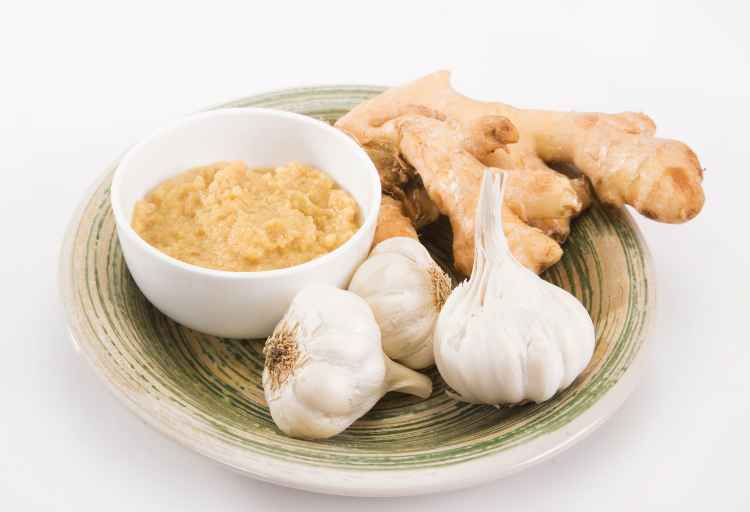5 Substitutes For Garlic Ginger
Looking to add some flavor to your dishes but don’t have any garlic or ginger on hand? No worries! There are plenty of substitutes that can give your meals that same delicious kick. Whether you’re out of these pantry staples or simply looking to switch things up, we’ve got you covered.
One option is to reach for onion and turmeric. This combination not only adds a savory taste but also provides anti-inflammatory benefits.
Another great substitute is shallots and lemongrass, which offer a similar aromatic profile and enhance the overall taste of your dish.
If you’re in need of some heat, try horseradish and cumin for a spicy twist. Scallions and cardamom also make a great duo, adding both freshness and complexity to your recipes.
Lastly, consider using asafoetida and galangal as substitutes. Asafoetida mimics the pungency of garlic while galangal brings its own unique flavor profile that pairs well with various cuisines.
With these versatile substitutes at your disposal, you can confidently experiment in the kitchen even when you’re missing those essential ingredients. Get ready to elevate your meals with these flavorful alternatives!

Key Takeaways
- Substitute options for garlic and ginger include onion and turmeric, shallots and lemongrass, horseradish and cumin, scallions and cardamom, asafoetida, and galangal.
- Onion and turmeric provide a savory taste and anti-inflammatory benefits.
- Shallots and lemongrass enhance the overall taste of dishes.
- Horseradish and cumin add spice and warmth to meals.
What Are The Substitutes For Garlic Ginger?
01. Onion and Turmeric
The pungent aroma of onion and the vibrant yellow hue of turmeric bring a lively burst of flavor to dishes, making them a worthy substitute for garlic ginger. Not only do onions add depth and complexity to recipes, but they also offer numerous health benefits.
They’re loaded with antioxidants and anti-inflammatory compounds, so they can help boost your immune system and protect against chronic diseases like heart disease and cancer. They’re also a great source of vitamins C and B6, as well as fiber, which promotes healthy digestion.
On the other hand, turmeric isn’t just known for its distinct color but also for its versatility in cooking. It’s commonly used in Indian cuisine, adding warmth and earthiness to dishes like curries, soups, and stews.
Turmeric contains an active compound called curcumin that has powerful anti-inflammatory properties. It may help reduce the risk of chronic conditions such as arthritis, Alzheimer’s disease, and certain types of cancer.
Incorporating onion and turmeric into your cooking not only enhances the flavor profile but also provides added health benefits. So next time you find yourself without garlic ginger, don’t fret! Reach for some onions and turmeric instead to create delicious meals that are both flavorful and nutritious.
02. Shallots and Lemongrass
If you’re out of garlic and ginger, fear not! Shallots and lemongrass make for fantastic alternatives. Not only do they bring their own unique flavors to the table, but they also add depth and complexity to Asian cuisine. Here are some creative ways to use shallots and lemongrass in recipes without garlic ginger:
- Shallots: These small onions have a milder flavor compared to regular onions, making them perfect for adding a subtle onion taste without overpowering the dish. Finely chop shallots and sauté them in oil until golden brown for a delicious base in stir-fries or soups. Alternatively, pickle-sliced shallots with vinegar, sugar, and salt for a tangy condiment that goes well with grilled meats or salads.
- Lemongrass: Known for its citrusy aroma, lemongrass adds brightness and freshness to dishes. To use it as a substitute for ginger, peel off the tough outer layers and finely mince the tender part of the stalk. Add it to curries or marinades for an exotic twist. You can also steep chopped lemongrass in hot water to make a fragrant tea or infuse it into coconut milk for a flavorful broth.
So next time you find yourself without garlic and ginger, reach for shallots and lemongrass instead. They’ll surely elevate your Asian-inspired dishes with their distinctive flavors!
03. Horseradish and Cumin
When you’re looking to add a fiery kick and earthy warmth to your dishes, horseradish, and cumin are the dynamic duo that’ll take your culinary creations to the next level.
Not only do they provide amazing flavors, but they also come with numerous health benefits. Firstly, let’s talk about horseradish. This root vegetable is known for its pungent taste and distinctive aroma.
It contains a compound called glucosinolate, which has been linked to cancer-fighting properties. Additionally, horseradish is packed with vitamins C and B6, as well as minerals like calcium and potassium.
Now onto cumin – a spice commonly used in Indian and Middle Eastern cuisines. Cumin is rich in antioxidants that can help reduce inflammation in the body. It also aids digestion and may even improve blood sugar control. Moreover, cumin provides iron, manganese, and other essential nutrients.
Incorporating horseradish and cumin into your dishes can be done in creative ways. For example, you can mix grated horseradish with sour cream or yogurt for a tangy dip or spread it on sandwiches for an added kick. As for cumin, try sprinkling it on roasted vegetables or adding it to marinades for grilled meats.
So go ahead and experiment with these flavorful substitutes for garlic ginger – horseradish and cumin won’t disappoint! Enjoy their unique tastes while reaping their health benefits at the same time.
04. Scallions and Cardamom
Get ready to elevate your dishes with the unique flavors of scallions and cardamom. When it comes to finding substitutes for garlic ginger paste, look no further than scallion and ginger paste.
Scallions, also known as green onions, have a milder flavor compared to garlic but still offer a nice kick of oniony goodness. Combined with the aromatic spice of cardamom, these two ingredients create a dynamic flavor profile that will enhance any dish.
To make scallion and ginger paste, simply blend together equal parts of chopped scallions and grated ginger until you achieve a smooth consistency. This paste can be used in marinades, stir-fries, or even as a base for soups and sauces.
The combination of the fresh, crisp taste of scallions with the warm, slightly sweet notes of cardamom adds depth and complexity to your recipes.
Not only do scallion and cardamom provide an excellent substitute for garlic ginger paste in terms of flavor, but they also offer additional health benefits. Scallions are packed with vitamins A and C, while cardamom is known for its digestive properties.
So next time you find yourself out of garlic or ginger, don’t fret! Reach for scallions and cardamom instead and watch how these ingredients transform your dishes into culinary masterpieces.
05. Asafoetida and Galangal
Looking to add a new twist to your dishes? Spice things up with the bold flavors of asafoetida and galangal, giving your recipes an exotic and aromatic kick.
Asafoetida, also known as Hing, is a resinous gum derived from the Ferula plant species. It’s been used in traditional medicine for its various health benefits, including aiding digestion and reducing bloating.
In cooking, asafoetida adds a unique flavor reminiscent of garlic and onions. Just a pinch of this pungent spice can transform any dish into something extraordinary.
Galangal, on the other hand, is a rhizome belonging to the ginger family. It has a spicy and citrusy flavor that adds depth to curries, soups, and stir-fries.
Galangal is commonly used in Southeast Asian cuisine and pairs well with ingredients like lemongrass and coconut milk. Its medicinal properties include anti-inflammatory effects and digestive aid.
To incorporate these flavors into your recipes, try using asafoetida in place of garlic or onion powder for added depth of flavor. Use it sparingly though since its taste can be overpowering if too much is added.
For galangal recipes, consider adding it to Thai curries or infusing it into broths for an authentic Southeast Asian taste experience.
Incorporating asafoetida and galangal into your cooking repertoire will surely impress your guests with their distinctive flavors while adding an exotic touch to your dishes!
Conclusion
In conclusion, when you’re out of garlic and ginger for your recipes, fear not! There are several substitutes available that can still add a delicious flavor to your dishes.
Whether it’s using onion and turmeric as an alternative or trying shallots and lemongrass, there are options to suit different tastes. Don’t forget about horseradish and cumin or scallions and cardamom for a unique twist. And if you’re feeling adventurous, give Asafoetida and Galangal a try.
With these substitutes at hand, you’ll never be caught without the flavors you need.
